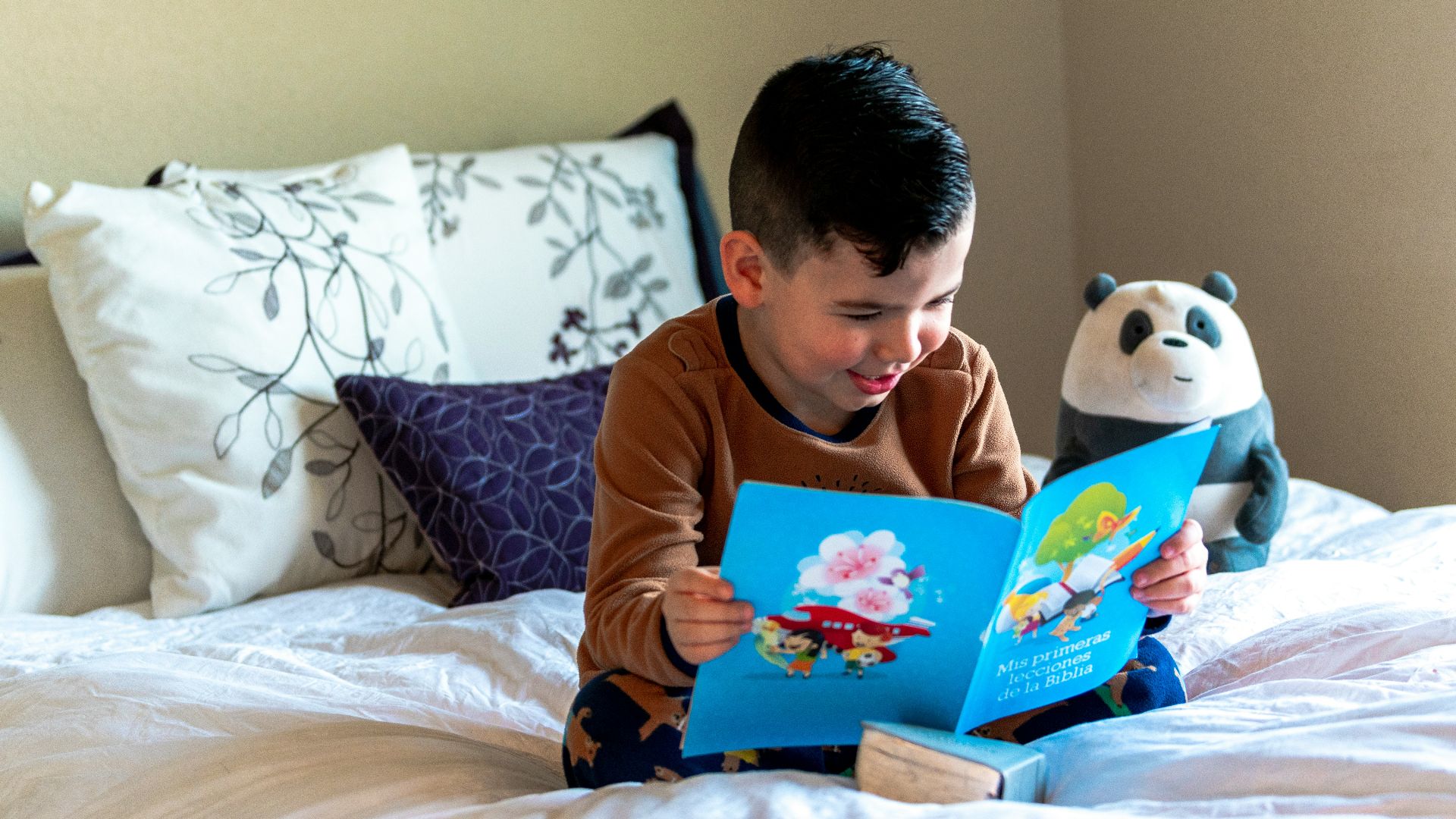How to Raise Readers Correctly
There’s a moment when a kid vanishes behind the cover of a book. Something clicks, locking them into the story, and they almost seem to lose complete awareness of their surroundings. It’s a subtle disappearance act that’s most notable in the faraway look that settles over their expression, a tiny half-smile tugging at the corner of their lips. That’s the magic everyone talks about when they mention their love of reading. But sometimes, without meaning to, we make it harder for that moment to happen. We push our kids too hard and turn reading into another chore on the to-do list wedged between soccer practice and brushing teeth. Here are ten ways to nurse their desire to read and ten strategies that always backfire.
1. Let Them Choose Their Own Books
Even if it’s Captain Underpants. Having agency is an intoxicating feeling for a kid, and being able to pick their own book makes reading feel less like homework. A child who proudly walks out of the library clutching Dog Man is on the road to reading Treasure Island one day. Or maybe not—and that’s fine too.
2. Read Out Loud, Long After They Can Read Alone
There’s something captivating about hearing a story come to life in spoken words. The sentences take on a musical quality, and the characters seem to spring off the pages. Reading to an eight-year-old who’s perfectly capable of doing it themselves makes reading a moment you can share together rather than something you do alone behind closed doors. Plus, it’s a sneaky way to get them hooked on stories slightly above their reading level.
3. Leave Books Everywhere
Leave books feathered out on the coffee table. Leave them in the car. Leave them in the bathroom. By cultivating a sprawling library scattered throughout your home, you invite curiosity in a way that neat rows on a perfectly alphabetized shelf never will.
4. Talk About Books Casually
Don’t quiz them on what they’re reading. Instead, refer to the plotlines casually, as if discussing the latest gossip: “Can you believe what Matilda did?” or “That ending was brutal.” Kids tune into that kind of chatter the same way they perk up when adults whisper secrets. Talking about characters as if they’re real gives them permission to care about them deeply.
5. Visit Libraries and Bookstores Without a Plan
Wandering aimlessly through the shelves is half the point. Let them pull random things off the shelves, flip through cookbooks, or linger by the comics. It’s not about finding the right book but about discovering the world of literature as a whole. Sometimes the smell of new books and the weighted silence of the aisles are more memorable than what you take home.
6. Model Reading Without Preaching It
Kids notice when adults read. They also notice when adults pretend to read while scrolling their phones. A parent sitting quietly with a novel on the couch sends a bigger message than any lecture about balancing screen time. The sight alone normalizes reading as a thing people do, not a thing kids are told to do.
7. Connect Books to Real Life
After they’re done reading Charlotte’s Web, maybe visit a farm. After they finish Percy Jackson, go visit the Greek exhibit in a history museum. When stories spill over into the real world, they stop being assignments and become part of the scenery of everyday life.
8. Celebrate Finishing a Book
We’re not talking gold stars or a cash payout, but a celebratory conversation. Ask them about their favorite passages and whether they would recommend it or not. Treat finishing a book like finishing a movie. It’s an experience, not a test.
9. Make Reading Cozy
Create a quiet corner in your library with a warm, fuzzy blanket. Bring them a steaming mug of hot chocolate. Reading thrives in comfort. It’s not about luxury per se; it’s more about making a space feel inviting enough that opening a book feels natural.
10. Be Patient with Boredom
Sometimes kids lose interest and stop halfway through a book. That’s okay. Forcing them to finish kills the spark faster than anything. Reading isn’t a discipline to master; it’s a relationship with a story. Sometimes they’ll return to a particular book, other times not.
And now, here are ten ways your efforts may be sabotaging your child’s desire to read.
1. Forcing Books You Think They “Should” Read
You know the ones: the dusty classics that build character. Forcing The Red Badge of Courage on a fourth grader because it’s “good for them” is like serving Brussels sprouts for dessert. It’s a surefire way to make reading a bitter experience.
2. Treating Reading Like a Measurement of Intelligence
Telling them that they’re smart because they read may sound nice, but it’s building up pressure. Suddenly, reading isn’t joyful but a way to maintain a desirable identity. When they end up stumbling on a denser book, the shame hits harder.
3. Turning It into Homework
Keeping reading logs or a dreaded book report turns what should be an enjoyable pastime into a chore. Formal logs have their place, sure, but when every page feels like an obligation, the story becomes a slog rather than a pleasant foray.
4. Interrupting Their Reading
When they’re immersed in a book, leave them be. Resist the urge to ask them mid-chapter, “What’s happening now?” Interrupting a reader is no less an intrusion than talking during a movie. Let them have that private space inside the story and touch base after they’re done for the day.
5. Overpraising
“Wow, you read for 30 minutes straight!” sounds encouraging, but it subtly implies it’s an unusual feat for them. Kids can sense condescension a mile off. Reading shouldn’t be treated like flossing; it should feel ordinary, even when it’s extraordinary.
6. Using Books as Punishment or Privilege
Telling them they can’t watch television until they’ve read a chapter or two transforms reading into the vegetables of activities. It shifts from something they ought to enjoy to something they need to endure to earn the fun stuff.
 Michał Parzuchowski on Unsplash
Michał Parzuchowski on Unsplash
7. Criticizing Their Choices
People dabble in different genres, whether that’s comic books or fantasy sagas. When you criticize their decision to reread Harry Potter for the sixth time, you start to make them feel ashamed of their choices. Rolling your eyes at their picks says more than you think.
8. Over-Scheduling Their Time
Reading time thrives in the quiet spaces between obligations. When every hour of the day is accounted for with piano lessons, homework, and soccer practice, there’s no downtime left. Reading needs boredom to thrive. A kid with ten free minutes might open a book; a kid with zero won’t.
9. Comparing Siblings or Friends
Comparing one child’s reading habits to another’s is a surefire way of fostering resentment. Comparison turns reading into competition, and nobody falls in love with a pastime they’re losing at.
10. Treating the End Goal as “Liking Books”
It sounds correct, but it’s backward. The goal isn’t to make them love reading; it’s to let them find the books they love. Maybe it’s novels. Maybe it’s non-fiction. Maybe it’s cookbooks with sticky pages and chocolate smears.



























